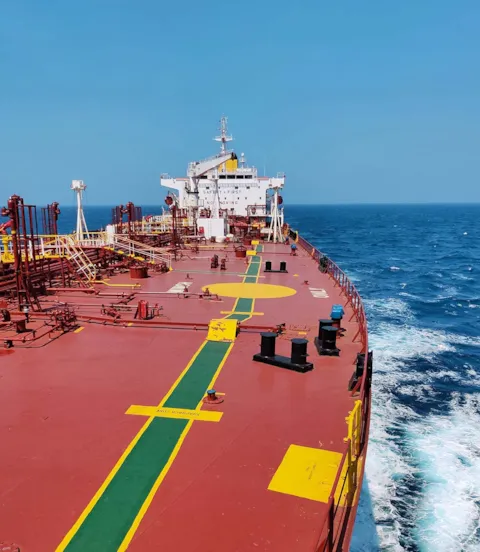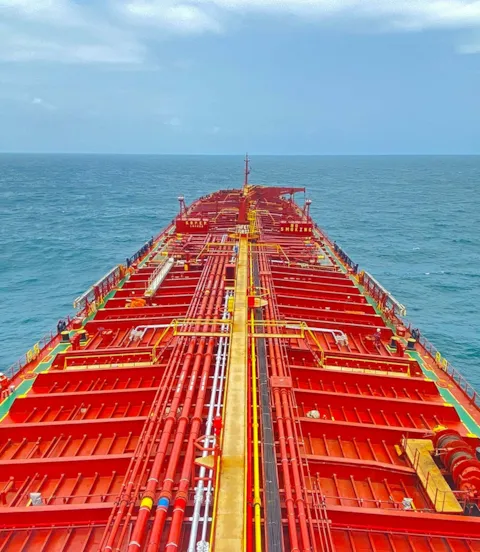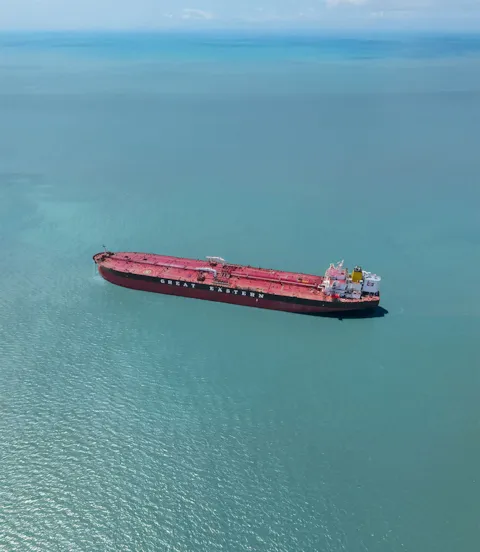A multifaceted approach to managing decarbonization risks
In a time of regulatory uncertainty and evolving fuel options, shipowners like Great Eastern Shipping are taking a pragmatic route to decarbonization by focusing on flexible fleet upgrades and operational efficiencies while supporting Indian ports and government construction of a low-GHG fuel infrastructure.
As the shipping industry responds to IMO’s decarbonization goals for 2050, along with the interim targets for 2030 and 2040, many questions remain unanswered, reflecting the complexity of the path ahead. “The major challenge is the regulatory uncertainty,” says Capt. Ankush Gupta, Chief Operating Officer of the Great Eastern Shipping Company Ltd. (G E Shipping), India’s largest private-sector shipping company. “We desperately need a clear, final ‘basket of measures’, specifically the global fuel standard.”
Drop-in biofuels can reduce emissions immediately
As shipowners and operators plot a course towards net-zero, they must carefully weigh their options to manage the potential increase in emission- and fuel-related costs. Which new fuel will be available at scale, when, and what will be the price tag? How long will it take ports to build up an adequate global bunkering infrastructure for new fuels? How will all this change the competitive environment?
But this uncertainty has not stopped G E Shipping from taking action. “We are actively pursuing immediate, viable solutions,” says Gupta. “We've been a pioneer in India by successfully completing trials of marine biofuel blends on our tankers. This was a landmark achievement, demonstrating that sustainable drop-in fuels can achieve instant, meaningful emissions reductions in our existing fleet without requiring massive capital investment in engine modifications.” G E Shipping is now using biofuels on selected voyages where supply logistics allow, Gupta adds.
Collaborating for green hydrogen and ammonia infrastructure in Indian ports
Operating a fleet of roughly 40 tankers, bulk carriers, and gas carriers, with more to be added soon, the company is pursuing a cautious but steady fleet renewal strategy in line with India’s ambitious national maritime vision.
“Our decarbonization efforts are in line with the Indian governments Maritime Amrit Kaal Vision 2047 and the Harit Sagar initiatives,” says Gupta. “As the country's leading private-sector shipping company, we feel a responsibility to champion this transition. We're very open to collaborating with Indian ports and government bodies, providing operational insights to help them shape the necessary infrastructure for green shipping corridors, especially in line with the national vision for green hydrogen and ammonia.”

Energy-saving devices and operational measures buy time
DNV’s Maritime Advisory experts completed a decarbonization study for G E Shipping’s entire fleet a few years ago, resulting in CII ratings and a decarbonization plan that delivers actionable recommendations. This has enabled G E Shipping to commit its resources to the most effective and cost-efficient measures. “Our primary focus is on energy-saving devices, installed during dry dockings,” says Gupta. “We’ve invested heavily in propulsion efficiency, fitting pre-swirl devices and high-efficiency propellers to reduce energy losses. These technical retrofits, along with engine part-load optimization, high-performance hull coatings, and hull cleaning, deliver substantial fuel and CO2 reductions.”
Proactive biofouling management and the use of combustion catalysts are supporting these measures, while advanced voyage optimization and smarter autopilot systems help the vessels select the most efficient itineraries, achieving additional, measurable savings. G E Shipping is also exploring just-in-time arrival, working with the Blue Visby Consortium. “For the long term, our R&D evaluates technologies like air lubrication systems, wind-assisted propulsion, and onboard carbon capture as critical components for meeting our ultimate decarbonization goals,” remarks Gupta.
Nevertheless, the company is well aware that these are short-term fixes, he adds. “These operational measures buy us time, but they won’t meet the ambitious mid-term targets.”

Cautious fleet renewal strategy prioritizes fuel flexibility
With future fuel pathways still evolving, combined with high newbuilding prices and limited yard availability, G E Shipping is currently prioritizing fleet renewal through the acquisition of younger, well-maintained second-hand vessels to replace older, less-efficient tonnage.
“We are building a more fuel-flexible fleet through these more modern, often retrofit-ready acquisitions which can be transformed to low-GHG fuels in the future,” says Gupta. “This approach improves our fleet’s overall efficiency, lowers its average age, helps us manage our CII ratings, and maintains a healthy balance sheet. While this isn't the final solution for net zero, for our type of fleet it is the most prudent path forward until the new fuel ecosystem and its associated technologies are clearly defined. This approach ensures we remain competitive in the international market.”
“Fuel flexibility remains a key asset in fleet renewal. Decarbonization pathways vary by vessel type, operational profile and regional context and must anticipate and adapt to upcoming regulations and industry developments, which also makes them highly dynamic,” notes Uday Chaitanya Ganivada, Country Manager – India, Sri Lanka & Bangladesh at DNV. “Through our advisory services and digital platforms, DNV helps shipowners evaluate retrofit potential and future-proof their fleets against evolving emission standards.”
DNV is a critical strategic partner on our decarbonization journey, helping us make informed, risk-managed decisions about fleet renewal.

Benefitting from DNV’s Emissions Connect and other digital platforms
G E Shipping’s management of CII ratings as well as EU ETS and FuelEU Maritime reporting has benefited greatly from DNV’s digital platforms, stresses Gupta. When his company adopted DNV’s Emissions Connect service for most of its vessels two years ago, this was a highly strategic decision, he says: “It was about future-proofing our operations and gaining a competitive advantage. We needed a platform that could handle real-time data verification so we could manage our emissions and liabilities on a voyage-by-voyage basis. Emissions Connect provides that trusted, third-party source of truth essential for both regulatory compliance and commercial settlements.”
Emissions Connect has allowed G E Shipping to transition from a reactive, manual process to a proactive, data-driven approach, Gupta adds. “We can not only monitor fleet performance continuously but also simulate future CII ratings, project our EU ETS liabilities, and make informed operational decisions before issues arise. We’re essentially turning a compliance burden into a tool for strategic planning.” The resulting data transparency builds trust and gives the company a strong competitive advantage in negotiating charters and carbon costs, he adds.
Many G E Shipping vessels are also fully integrated in DNV’s Digital Machinery and Machinery Maintenance Connect platforms. “These tools are central to our proactive strategy, helping us turn data into action,” says the COO.

Collaborating to plot a predictable pathway to net-zero
When G E Shipping is eventually ready to invest in newbuilding projects, this will be the most critical investment decision of his generation, Gupta emphasizes. “We’ll rely heavily on DNV to de-risk that future. We’ll use their expertise to conduct in-depth techno-economic feasibility studies for various fuel options, utilizing tools like their Fuel Selector and Alternative Fuels Insight platform to model lifetime costs and monitor availability.” DNV’s class rules for alternative fuel notations will provide G E Shipping with a predictable pathway for design approval, ensuring the highest safety and operational standards, he adds.
“In a region as dynamic and diverse as South Asia, collaboration is key to unlocking scalable decarbonization solutions,” says Ganivada. “By working closely with forward-thinking companies like Great Eastern Shipping, we at DNV can help bridge the gap between ambition and action, ensuring that strategic decisions are backed by robust data and regional insight.”
Gupta concludes “DNV is a critical strategic partner on our decarbonization journey, helping us make informed, risk-managed decisions about fleet renewal. Their guidance is invaluable for understanding the commercial and operational impacts of rules like CII and EU ETS.”
- Great Eastern Shipping

